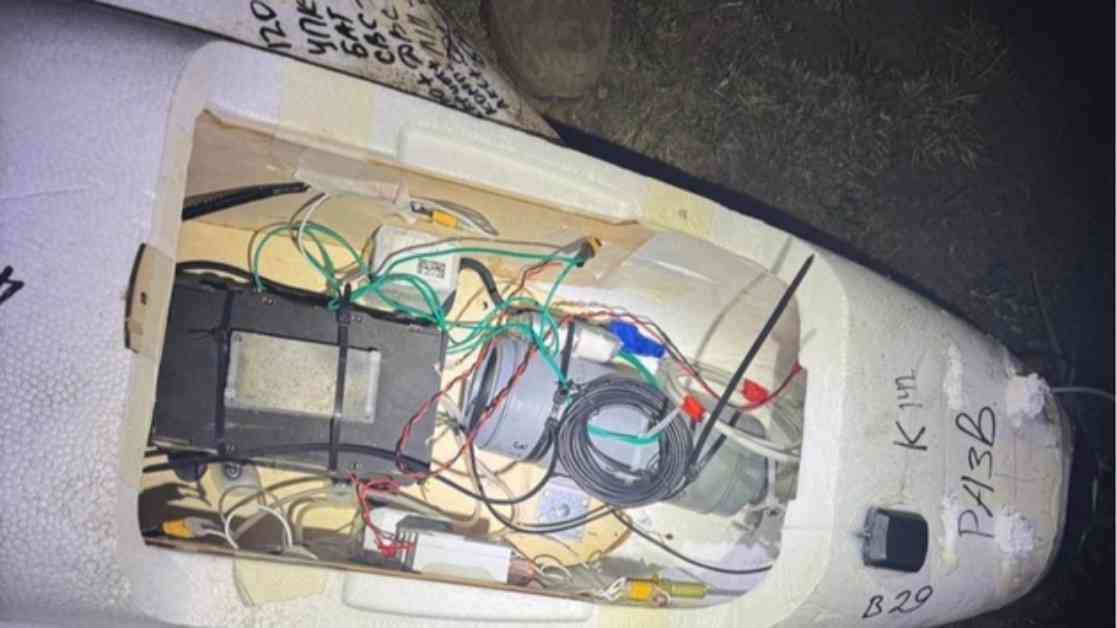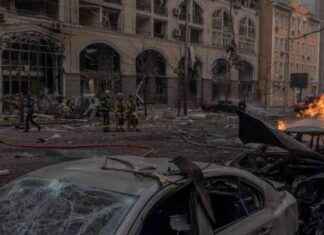Russian forces are repurposing the once innocent foam-plastic “Gerbera” drones into deadly kamikaze weapons, according to Ukrainian electronic warfare specialist Serhii Beskrestnov, known as “Flash.” These drones, initially designed as decoys to confuse air defense systems, are now being outfitted with warheads, transforming them into lethal weapons. Beskrestnov revealed this alarming development on Telegram, sharing photos as proof of this dangerous evolution.
The Gerbera drones, lightweight and cost-effective, measuring 2 meters in length, 2.5 meters in wingspan, and weighing about 10 kilograms, have the capability to fly up to 300 kilometers without a warhead. With a price tag of approximately $10,000 per unit, these drones are now being equipped with various types of warheads, carrying payloads weighing up to 5 kilograms. Beskrestnov emphasized the importance of this update for mobile fire teams, rescuers, police, and military personnel, warning of the new threat these drones pose.
### A New Threat Emerges
The Defense Express media outlet reported that during a demonstration in July 2024, Russian developers showcased the potential of arming these drones for use as loitering munitions. Plans were also in place to equip the Gerbera UAVs with cameras and communication systems, enhancing their functionality. The drones can operate similarly to Iranian-designed Shahed drones, flying towards pre-programmed coordinates stored in their memory. Concerns were raised that enemies could install timed detonators, causing the drones to self-destruct after a specific period, posing a significant risk to security.
Experts from Defense Express highlighted the dangers of examining the wreckage of these drones independently, underscoring the extreme risks associated with handling these potentially explosive devices. Given their low accuracy, basic design, and inexpensive electronic components, Russian forces could be intentionally using Gerbera drones to target civilian areas where precision is less critical, posing a grave risk to innocent lives.
### A Budget Alternative
The Gerbera drones have been likened to a simplified, budget-friendly version of the Iranian Shahed-136, rebranded by Russia as the Geran-2. These drones, first sighted in mid-July 2024, have already raised concerns about their potential threat. Ukrainian air defenses successfully shot down a Gerbera over Kyiv for the second time on July 24, providing valuable insight into the technology behind these drones. The drone’s crash landing in open terrain allowed for detailed analysis, revealing the drone’s rudimentary construction and inexpensive components.
Vladyslav Vlasyuk, an advisor to the Head of the Office of the President of Ukraine, pointed out the drone’s substandard quality, describing it as a “budget version of the Shahed.” Experts found the drone to be assembled with minimal production standards, utilizing foam plastic for its body and plywood for reinforcement. Despite its crude construction, retired National Guard major Oleksiy Hetman warned of the serious threat these drones could pose due to their lightweight and difficult detectability by radar systems.
Andriy Chernyak, a spokesperson for Ukraine’s Military Intelligence (HUR), highlighted the significant cost difference between the Gerbera and the Shahed drones, making them an attractive option for military operations. While a single Shahed drone costs up to $200,000, the Gerbera is estimated at just $10,000 per unit. Engineers at Ukrainian drone manufacturer Airlogix believe that these drones serve as a distraction for air defense systems, diverting attention from more advanced UAVs. Additionally, the Gerbera’s potential for kamikaze attacks on moving targets using FPV cameras raises further concerns about its destructive capabilities.
### Overwhelming Defense Systems
Military analysts suggest that deploying multiple Gerbera drones simultaneously could overwhelm Ukrainian air defense systems, creating a smokescreen that increases the likelihood of high-priority threats reaching their targets. The Espresso media outlet reported that these drones, flying at altitudes of up to 1 kilometer, are challenging to shoot down with small arms, making them a formidable adversary. While they remain vulnerable to electronic warfare, jamming their control signals could prevent them from reaching their intended targets.
In conclusion, the transformation of innocent decoy drones into deadly kamikaze weapons represents a significant escalation in military tactics, posing a serious threat to both military and civilian targets. As tensions continue to rise, the use of such drones underscores the evolving landscape of modern warfare, where even the most innocuous technologies can be weaponized for devastating purposes.

















